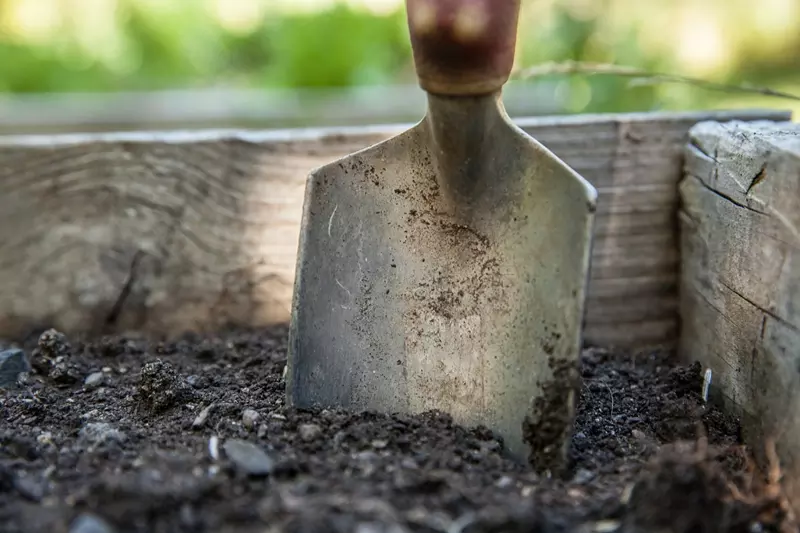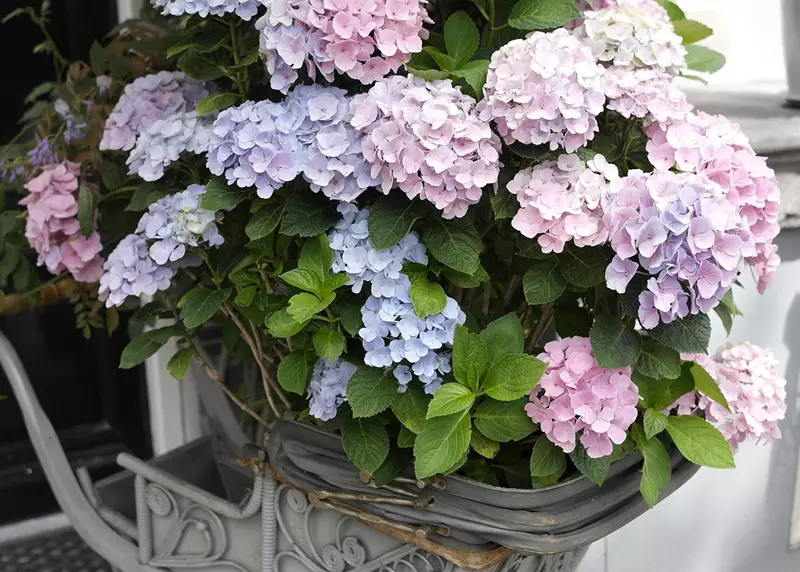
Hydrangea Planting and Care: A Comprehensive Guide
A comprehensive guide on planting and caring for hydrangeas, covering site selection, soil preparation, planting steps, watering, fertilising, pruning, and pest management.
Read MoreHydrangeas are beloved for their vibrant blooms and lush foliage. To cultivate healthy hydrangeas, it's crucial to understand the soil conditions they require. This article explores the key soil characteristics that support the optimal growth of hydrangeas.

Hydrangeas thrive in well-draining, fertile soils rich in organic matter. Loamy soils, which balance sand, silt, and clay, provide the ideal structure. This composition ensures adequate moisture retention while preventing waterlogging, which can lead to root rot.
The pH level of the soil influences hydrangea bloom colour:
Regular soil testing is recommended to monitor and adjust pH levels accordingly.
Incorporating organic materials such as compost or well-rotted manure enhances soil fertility and structure. Organic matter improves moisture retention and provides essential nutrients, fostering robust hydrangea growth.
Hydrangeas prefer consistently moist soils that drain well. Poor drainage can cause root diseases, while insufficient moisture leads to wilting. Amending heavy soils with organic matter or creating raised beds can improve drainage and moisture balance.
Optimal soil temperatures for hydrangea growth range between 15°C and 21°C (60°F and 70°F). Mulching helps regulate soil temperature and conserve moisture, creating a favourable environment for root development.
By understanding and maintaining these essential soil characteristics, gardeners can ensure their hydrangeas flourish, resulting in healthy plants with stunning blooms.
Soil pH measures the acidity or alkalinity of the soil, on a scale from 0 (most acidic) to 14 (most alkaline), with 7 being neutral. This pH level affects nutrient availability and, in the case of hydrangeas, the uptake of aluminium ions, which are pivotal in determining bloom colour.
The colour of hydrangea blooms is closely linked to soil pH:
At intermediate pH levels (between 6.0 and 7.0), flowers may exhibit purple hues or a mix of blue and pink shades.
The presence of aluminium ions in the soil is crucial for the blue pigmentation in hydrangea flowers. In acidic soils, aluminium becomes more soluble and is readily absorbed by the plant, combining with pigments to produce blue hues. Conversely, in alkaline soils, aluminium becomes less available, leading to pink or red flowers.
Gardeners can modify soil pH to achieve desired hydrangea colours:
Regular soil testing is essential to monitor pH levels and ensure they are adjusted appropriately.
Not all hydrangea species respond to soil pH changes. For instance, white hydrangea varieties typically do not alter their bloom colour based on soil pH. Moreover, achieving and maintaining the desired pH level requires consistent monitoring and adjustment, as soil pH can naturally fluctuate over time.
By comprehending the influence of soil pH on hydrangea bloom colour, gardeners can effectively tailor their soil management practices to cultivate the desired floral displays, enhancing the aesthetic appeal of their gardens.
Enhancing soil quality involves incorporating organic matter to improve nutrient content and moisture retention. Materials such as compost, leaf mould, or well-decomposed manure can be mixed into the planting area. This practice not only enriches the soil but also promotes beneficial microbial activity, fostering a healthier root environment.
Incorporating organic matter such as compost, well-rotted manure, or leaf mould enriches the soil with essential nutrients and improves its structure. Organic matter enhances moisture retention in sandy soils and promotes drainage in clay soils, creating an ideal environment for hydrangea roots.
The pH level of soil influences hydrangea flower colour and nutrient availability.
Regular soil testing is recommended to monitor pH levels and make precise adjustments.
Hydrangeas require well-draining soil to prevent root rot. Incorporating coarse sand or fine gravel can enhance drainage in heavy, clayey soils. Additionally, creating raised beds can facilitate better water movement away from the root zone.
Applying a layer of organic mulch, such as wood chips or shredded bark, around the base of hydrangeas helps conserve soil moisture, regulate temperature, and suppress weeds. As the mulch decomposes, it adds organic matter to the soil, further enhancing its quality.
While soil amendments improve overall soil health, targeted fertilisation provides specific nutrients that hydrangeas need. Using a balanced, slow-release fertiliser in early spring supports vigorous growth and abundant flowering. Avoid over-fertilisation, as excessive nutrients can lead to poor bloom production.
By thoughtfully applying these soil amendments and enhancements, gardeners can create optimal growing conditions for hydrangeas, resulting in healthy plants with stunning, vibrant blooms.
Hydrangeas thrive in moist, well-drained soils. Proper drainage is essential to prevent root rot and other moisture-related issues. This article explores effective strategies to ensure optimal drainage for hydrangeas.
Adequate drainage prevents water accumulation around hydrangea roots, which can lead to oxygen deprivation and root diseases. Ensuring proper drainage maintains soil aeration and promotes healthy root development.
To evaluate soil drainage, dig a hole approximately 30 cm deep and fill it with water. If water remains after 2 hours, the soil has poor drainage and requires amendment.
Incorporating organic matter such as compost or well-rotted manure enhances soil structure, promoting better drainage and moisture retention. This amendment increases pore space, facilitating water movement and root penetration.
Constructing raised beds elevates the root zone, allowing excess water to drain away more effectively. This method is particularly beneficial in areas with heavy clay soils or poor natural drainage.
For clay-rich soils, adding coarse sand or fine gravel can improve drainage by increasing soil porosity. However, it's crucial to mix these materials thoroughly to prevent layering, which can impede water movement.
When growing hydrangeas in containers, ensure pots have adequate drainage holes to prevent waterlogging. Using a well-draining potting mix and placing a layer of gravel at the bottom can further enhance drainage.
Water hydrangeas deeply but infrequently, allowing the soil to dry slightly between watering sessions. This practice encourages deep root growth and reduces the risk of root rot.
By implementing these strategies, gardeners can ensure proper drainage, fostering healthy and vibrant hydrangea growth.
Maintaining optimal soil conditions is crucial for the health and vitality of hydrangeas. Regular soil care ensures these plants receive the necessary nutrients and environment to thrive.
Conducting periodic soil tests helps monitor pH levels and nutrient content. This practice enables timely amendments to maintain soil fertility and the desired pH range for hydrangeas.
Applying a layer of organic mulch, such as leaf mould, well-rotted manure, or compost, around the base of hydrangeas each spring helps retain moisture, regulate soil temperature, and suppress weeds. As the mulch decomposes, it enriches the soil with organic matter.
Hydrangeas prefer consistently moist soil. Regular watering, especially during dry spells, ensures the soil remains adequately hydrated. However, it's essential to avoid overwatering, which can lead to root rot.
Incorporating organic matter into the soil enhances its fertility, providing essential nutrients for hydrangea growth. This practice improves soil structure and nutrient availability.
Regularly removing weeds prevents competition for nutrients and water, ensuring hydrangeas have access to the resources they need. Mulching also aids in suppressing weed growth.
Periodically loosening the soil around hydrangeas improves aeration and promotes healthy root development. This practice prevents soil compaction, which can hinder water and nutrient uptake.
By implementing these ongoing soil maintenance practices, gardeners can create an optimal environment for hydrangeas, leading to robust growth and vibrant blooms.
By understanding and implementing these soil management practices, gardeners can create an environment where hydrangeas thrive, enhancing the beauty and vitality of the garden.
Proper soil management throughout the year is essential for cultivating vibrant and healthy hydrangeas. Each season presents unique opportunities and challenges that, when addressed appropriately, can significantly enhance the growth and blooming of these beloved shrubs.
Spring marks the beginning of the growing season for hydrangeas. It's crucial to prepare the soil to support robust development.
The warmer months require diligent soil care to maintain hydrangea vitality.
As hydrangeas transition into dormancy, autumn soil care focuses on preparation for the coming months.
Winter care is about protecting the soil and roots from harsh conditions.
By adhering to these seasonal soil care practices, gardeners can ensure their hydrangeas receive the necessary support throughout the year, leading to vigorous growth and abundant blooms.
Maintaining the vitality of hydrangeas necessitates regular soil amendments to ensure optimal growth and vibrant blooms. Understanding the appropriate frequency and types of amendments is crucial for fostering a conducive environment for these ornamental plants.
Before implementing any amendments, it's essential to evaluate the existing soil conditions:
Prior to planting hydrangeas, enrich the soil to establish a fertile foundation:
Regular amendments are vital for sustaining soil health and hydrangea vitality:
Certain factors may necessitate adjustments to the amendment schedule:
By adhering to a structured soil amendment regimen, gardeners can cultivate robust hydrangeas that exhibit lush foliage and prolific flowering. Regular assessment and tailored amendments are key to sustaining soil health and plant vitality.
The vitality of hydrangeas is intricately linked to the health of the soil microbiome. A robust community of soil microorganisms fosters nutrient availability, disease resistance, and overall plant vigour. Understanding and enhancing soil microbial health is essential for cultivating flourishing hydrangeas.
The soil microbiome comprises bacteria, fungi, and other microorganisms that interact with plant roots, influencing growth and health. These microorganisms play pivotal roles in nutrient cycling, organic matter decomposition, and disease suppression.
Regular soil testing can assess microbial activity and organic matter content, guiding appropriate amendments. Implementing crop rotations and planting cover crops can further enhance microbial diversity and function.
By actively fostering a healthy soil microbiome, gardeners can create an environment where hydrangeas thrive, leading to vigorous growth and abundant, vibrant blooms.
Soil compaction poses a significant challenge to cultivating healthy hydrangeas, as it impedes root development and restricts essential nutrient and water uptake. Understanding the causes, effects, and remediation strategies for soil compaction is crucial for promoting vigorous hydrangea growth.
Soil compaction occurs when soil particles are pressed together, reducing pore space and leading to increased bulk density. This process diminishes soil porosity, thereby limiting the movement of air, water, and nutrients within the soil matrix.
Indicators of soil compaction include:
By implementing these strategies, gardeners can effectively address soil compaction, thereby fostering an environment conducive to healthy hydrangea growth and abundant flowering.
Selecting the appropriate fertiliser is crucial for the health and vibrancy of hydrangeas. Gardeners often deliberate between organic and synthetic options, each presenting distinct advantages and considerations. Understanding these differences is essential for informed decision-making.
Derived from natural sources such as plant matter, animal waste, and minerals, organic fertilisers release nutrients slowly, enhancing soil structure and promoting microbial activity.
Manufactured through chemical processes, synthetic fertilisers provide immediate nutrient availability, facilitating rapid plant growth and bloom production.
The choice between organic and synthetic fertilisers depends on specific gardening goals and environmental considerations. Organic options enhance soil health and sustainability, while synthetic fertilisers provide immediate nutrient delivery.
By comprehending the distinctions between organic and synthetic fertilisers, gardeners can tailor their fertilisation strategies to promote robust and vibrant hydrangeas.
Maintaining the health and beauty of hydrangeas requires effective pest management strategies that are environmentally friendly and sustainable. Natural pest control methods not only protect hydrangeas from harmful insects but also preserve beneficial organisms and the surrounding ecosystem.
Hydrangeas are susceptible to various pests that can compromise their vitality:
Regular inspection of hydrangeas is crucial for early pest detection. Examine the undersides of leaves and new growth for signs of pests or damage. Early intervention can prevent widespread infestations and minimise the need for control measures.
Opting for natural pest management techniques reduces reliance on chemical pesticides, thereby protecting beneficial insects and maintaining ecological balance. These methods contribute to a healthier garden environment and promote sustainable horticultural practices.
Implementing natural pest management strategies ensures that hydrangeas remain healthy and vibrant, enhancing the overall beauty of the garden while fostering environmental stewardship.
Effective erosion control is essential for cultivating healthy hydrangeas, as soil displacement can lead to nutrient loss and root exposure, adversely affecting plant vitality. Implementing strategic measures can stabilise soil and promote robust hydrangea growth.
Soil erosion involves the removal of the topsoil layer by wind, water, or human activity, resulting in diminished soil fertility and structure. For hydrangeas, which thrive in nutrient-rich, well-draining soils, erosion can impede growth and bloom production.
Certain hydrangea varieties are particularly effective in erosion control due to their extensive root systems and growth habits. For instance, the 'Incrediball' hydrangea features large white flowers and robust roots that stabilise soil. Similarly, 'Little Lamb' and 'Pinky Winky' hydrangeas offer aesthetic appeal while contributing to soil retention.
Integrating ground covers and vines alongside hydrangeas can enhance erosion control. Plants such as creeping juniper and climbing hydrangea spread quickly, forming protective layers over the soil and preventing displacement.
Consistent care, including pruning and monitoring soil conditions, ensures that hydrangeas remain healthy and effective in erosion control. Maintaining plant health enhances root strength and soil stability.
By adopting these erosion control strategies, gardeners can create a stable environment conducive to the flourishing of hydrangeas, thereby enhancing both the beauty and sustainability of the landscape.
Soil salinity refers to the concentration of soluble salts in the soil, which can adversely affect plant growth by disrupting water uptake and nutrient balance. Hydrangeas, known for their vibrant blooms, are particularly sensitive to high salinity levels. Effective management of soil salinity is crucial to ensure the health and vitality of these plants.
Salinity in soil arises from various factors, including natural processes such as mineral weathering and human activities like irrigation with saline water. Elevated salinity levels can lead to osmotic stress in plants, hindering their ability to absorb water and essential nutrients. This stress manifests in symptoms such as leaf burn, stunted growth, and reduced flowering in hydrangeas.
Regular soil testing is essential to monitor salinity levels. Electrical conductivity (EC) measurements provide insights into the soil's salinity status. An EC value exceeding 4 dS/m typically indicates high salinity, necessitating remedial actions. Consulting local agricultural extensions or soil testing laboratories can aid in accurate assessments.
Research indicates that salt tolerance varies among hydrangea species and cultivars. Selecting varieties with higher salt tolerance can mitigate the adverse effects of soil salinity. Consulting local nurseries or horticultural experts can provide guidance on suitable hydrangea selections for areas prone to salinity issues.
Regular monitoring of soil salinity and plant health is vital. Observing hydrangeas for signs of salt stress, such as leaf chlorosis or marginal burn, allows for timely interventions. Adjusting irrigation schedules, continuing soil amendments, and periodic soil testing contribute to sustained hydrangea health in saline conditions.
By implementing these strategies, gardeners can effectively manage soil salinity, ensuring that hydrangeas thrive and display their characteristic lush blooms.
Cultivating hydrangeas with sustainable soil practices not only enhances their growth and bloom quality but also contributes to environmental conservation. Implementing eco-friendly methods ensures the long-term health of both the plants and the surrounding ecosystem.
Hydrangeas thrive in well-draining, loamy soils rich in organic matter. They prefer slightly acidic to neutral pH levels, typically between 5.5 and 7.0. Maintaining these conditions is essential for optimal nutrient uptake and plant health.
Adding organic materials such as compost, well-rotted manure, or leaf mould improves soil structure, fertility, and moisture retention. These amendments support beneficial microbial activity, fostering a healthy root environment for hydrangeas.
Applying a layer of organic mulch around the base of hydrangeas helps regulate soil temperature, conserve moisture, and suppress weed growth. Materials like wood chips, straw, or shredded bark decompose over time, enriching the soil and reducing the need for chemical interventions.
Utilising compost derived from garden waste recycles nutrients back into the soil, enhancing its fertility and structure. Regular application of compost reduces reliance on synthetic fertilisers, promoting a more sustainable gardening approach.
Implementing efficient irrigation methods, such as drip systems or soaker hoses, minimises water usage and prevents soil erosion. Watering during early morning hours reduces evaporation, ensuring that hydrangeas receive adequate moisture while conserving resources.
Planting cover crops during the off-season protects the soil from erosion, enhances organic matter content, and improves soil structure. Leguminous cover crops also fix atmospheric nitrogen, naturally enriching the soil for subsequent hydrangea growth.
Regular soil testing provides insights into nutrient levels and pH balance, guiding informed decisions on necessary amendments. Monitoring soil health ensures that interventions are tailored to actual needs, preventing over-application of fertilisers and maintaining ecological balance.
By adopting these sustainable soil practices, gardeners can cultivate healthy, vibrant hydrangeas while promoting environmental stewardship and resource conservation.
Hydrangeas are cherished for their vibrant blooms and adaptability. However, their health and flowering potential are significantly influenced by the soil in which they are planted. Understanding and adapting to different soil types can optimise hydrangea growth and ensure a thriving garden.
Soils are generally classified into three main types: sandy, clay, and loamy. Each type has distinct characteristics that affect water retention, drainage, and nutrient availability. Determining your garden's soil type is the first step towards effective cultivation.
Sandy soils are characterised by large particles, leading to quick drainage and low nutrient retention. Hydrangeas in such soils may suffer from drought stress and nutrient deficiencies.
Clay soils have fine particles that retain water but may lead to poor drainage and root aeration issues. Hydrangeas in clay soils are prone to root rot if not managed properly.
Loamy soil, a balanced mix of sand, silt, and clay, is ideal for hydrangeas due to its optimal drainage and nutrient-holding capacity. Minimal amendments are needed, but maintaining organic matter levels through regular mulching and compost application will support plant health.
Hydrangea flower colour can be influenced by soil pH. Acidic soils (pH below 6) tend to produce blue flowers, while alkaline soils (pH above 7) result in pink blooms. Adjusting soil pH can help achieve desired flower colours.
By tailoring gardening practices to specific soil types and conditions, gardeners can create an environment where hydrangeas flourish, showcasing their full beauty and enhancing the garden's aesthetic appeal.

A comprehensive guide on planting and caring for hydrangeas, covering site selection, soil preparation, planting steps, watering, fertilising, pruning, and pest management.
Read More
Learn how to manipulate hydrangea flower colours through soil pH adjustments, aluminium availability, and proper fertilisation techniques.
Read More
Learn how to grow and care for hydrangeas in pots on your balcony. From choosing the right varieties to planting and seasonal care, get all the tips you need for success.
Read More